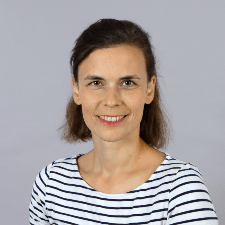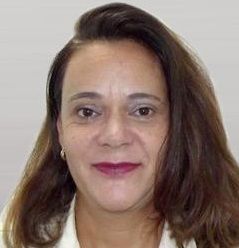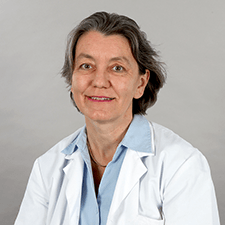Phoniatrics and Speech Pathology
In der Arbeitsgruppe Phoniatrie und Klinische Logopädie arbeiten Fachleute der Disziplinen Phoniatrie und Otorhinolaryngologie, Biomedizinische Wissenschaften und Klinische Logopädie interdisziplinär an verbesserten Möglichkeiten der klinischen Diagnostik und Therapie von Patienten mit Schluck- und Stimmstörungen.
Überblick
Schwerpunkte in der angewandten Forschung sind die Erprobung und Validierung symptomspezifischer Fragebögen und die Untersuchung von Behandlungseffekten bei Patienten mit Schluck- und Stimmstörungen. Die Grundlagenforschung umfasst Projekte zur Optimierung von computergestützten instrumentellen akustischen Analysen der menschlichen Stimme in der klinischen Diagnostik von Stimmerkrankungen. Wir betreuen akademische Qualifikationsarbeiten in der Medizin, Biomedizinischen Wissenschaften, Logopädie, Patholinguistik und Physiotherapie.
Publikationsliste anzeigenProjekte
L. He & M. Brockmann-Bauser
Classic source-filter theory of speech production prescribes that vocal fold vibrations and vocal tract resonances are independent processes. However, the relationship between these two mechanisms are more nuanced. Articulatory movements, on the one hand, change the vocal tract transfer function, where the glottal signal is sieved in the frequency domain. On the other hand, different articulatory setups should affect the muscles responsible for phonation as well. In various studies it has been observed that an open vowel tends to have a lower fundamental frequency as compared to a closed vowel. This project aims to untangle the relationship between articulation and phonation more systematically using both electromagnetic articulography and electroglottography among vocally healthy speakers. Moreover, the description of the naturally large variability among healthy speakers will be helpful for targeting pathologies in speech production.
This project is a subproject of an “Ambizione” project funded by the Swiss National Science Foundation (Grant Nọ PZ00P1_193328).
M. F. de Paula Soares, M. Carvalho Sampaio, M. Brockmann-Bauser
Main aim of this project is to investigate speech related influencing factors on voice onset time (VOT) in individuals with hyperfunctional voice disorders during a variety of speech tasks. On the acoustic dimension, VOT expresses the temporal duration of the phonatory trigger signal during stop consonant production. Previous studies have suggested a delay in VOT with increased speaking fundamental frequency, however opposite results were reported on male and women’s speech. Fundamental frequency control is related to multiple interaction factors, such as laryngeal muscle stiffness, vertical larynx position, and stiffness of extrinsic laryngeal muscles. These factors have been reported to be unbalanced in patients with hyperfunctional dysphonia. In accordance with this, recent studies have confirmed the relationship between decreased VOT duration in patients with hyperfunctional voice disorders, vocal nodules and moderate or severe perceptual dysphonia. Thus, VOT may be an acoustic measure with the potential to indicate the increase of laryngeal tension in patients with so-called primary and secondary hyperfunctional voice disorders. In the present work, the interrelation between speaking fundamental frequency and intensity, speech token and syllable stress with VOT will be investigated in women and men with primary and secondary hyperfunctional dysphonia.
This project study is linked to a broad project called “Study of the behavior of the acoustic measures of the Praat Program in the vocal assessment” witch focuses on the clinical application of the open source software Praat in vocal assessments of Brazilian Portuguese (BP) speakers.
Naomi Iob, Lei He, Sten Ternström, Huanchen Cai, M. Brockmann-Bauser, N. Klotz
Instrumental acoustic and electroglottographic analysis techniques have been recommended for standard voice diagnostics to objectively detect and rate voice dysfunction. However, the currently recommended acoustic measures including jitter, shimmer, HNR and CPPS significantly improve in phonations with higher voice sound pressure level (SPL) in both healthy and disordered voices. This minimizes the diagnostic accuracy and usefulness of these measures when applying current standards in clinical assessments.
The observed changes in louder phonations have been explained with different vocal fold tonus and closure patterns. However, to date this has not been conclusively investigated under uninfluenced phonatory conditions. Electroglottographic (EGG) assessments provide a non-invasive examination of vocal fold movements and functionality. Recent signal analysis innovations facilitate the modelling and categorization of EGG waveform types in relation to voice fundamental frequency and SPL. Therefore, main aim of the present work is to investigate changes in the electroglottographic waveform in different loudness conditions and vowels in healthy and pathologic voices, and to compare these results to standard diagnostic acoustic and electroglottographic indices. Further, it will be assessed, if voice pathology recognition is improved, when EGG assessment results are controlled for speaking voice SPL.
R. Hangartner, S. Marti, S. Reetz, J. Bohlender, M. Brockmann-Bauser
Unilateral vocal fold motion impairment (UVFMI) is a common diagnosis in ear, nose and throat specialized clinics. Voice dysfunction, dysphagia and respiratory complaints are well known clinical symptoms of UVFMI. While voice disorders and the corresponding treatments have been described in various studies, only little attention has been paid to subjective dysphagia, respiratory symptoms and functional voice outcomes. Main aims of this study are to investigate swallowing, voice and respiratory characteristics and their relationship applying standardized questionnaires, and to determine the predictive value of the questionnaires with regard to corresponding treatment options. Further, functional voice changes with regard to age and type of treatment will be investigated.
S. Bauer, J.E. Bohlender, E. Hartmann, M. Brockmann-Bauser
Dysphagia is a common finding in patients with oropharyngeal and hypopharyngeal cancer. The prevalence may be as high as 78%, depending on the tumor location, size and oncological treatment, but also on the assessment methods applied. Especially after irradiation, delayed dysphagia leads to malnutrition in 35 to 60%, and aspiration pneumonia in 5 to 25% of patients. Thus, these factors determine survival after successful tumor therapy to a much higher degree than previously assumed.
Dynamic Imaging Grade of Swallowing Toxicity (DIGEST) is an analytical method for grading the severity of pharyngeal dysphagia, developed and validated using videofluoroscopic (VFS) and endoscopic swallowing examinations (FEES) (Hutcheson et al., 2017, Starmer 2021). The method provides a reproducible way to grade pharyngeal dysphagia based on the parameters of safety and efficacy, which is aligned with the universal framework for toxicity reporting in oncology trials (Common Terminology Criteria for Adverse Events – CTCAE).
In this collaborative project with the University of Fribourg (Prof. Dr. Erich Hartmann), the DIGEST scale adapted for endoscopic swallowing examinations (FEES) will be translated transculturally, and a reliability test and validation of the German version (DIGEST-FEES-G) will be performed. For this, examination data from patients with head and neck tumors will be subjected to a retrospective analysis.
Longterm goal is to characterize the occurrence, severity, influencing factors and course of dysphagia in patients with oropharyngeal and/or hypopharyngeal carcinoma throughout cancer treatment by applying objective and subjective assessment methods.
L. Stappenbeck, S. Bartel, J. Bohlender, M. Brockmann-Bauser
Vocal fatigue has been described as a common complaint in patients with voice disorders. Main aim of this prospective study is to assess the validity and retest reliability of the first German version of the Vocal Fatigue Index (VFI), an English questionnaire developed for voice patients to assess potential symptoms of vocal fatigue.
Kooperationspartner
- Center for Laryngeal Surgery and Voice Rehabilitation, Massachusetts General Hospital and Harvard Medical School, Boston, USA, Prof. R. Hillman, Dr. D. Mehta, Dr. J. van Stan
- KTH Royal Institute of Technology, Dept. for Speech Music and Hearing, Stockholm, Sweden, Prof. S. Ternström
- Federal University of Bahia, Dept. of Speech-Language and Hearing Sciences, Salvador-BA, Brazil, Prof. M. Carvalho Sampaio, Prof. de Paula Soares, Prof. M. L. Masson
- Universität Fribourg, Departement für Sonder- und Heilpädagogik, Fribourg, Schweiz, Prof. E. Hartmann, S. Bauer MA
- University of Zurich, Institute for Computerlinguistics, Zurich, Switzerland, Dr. Lei He
- University of Konstanz, Department of Linguistics and LingLab, Dr. M. Canzi





